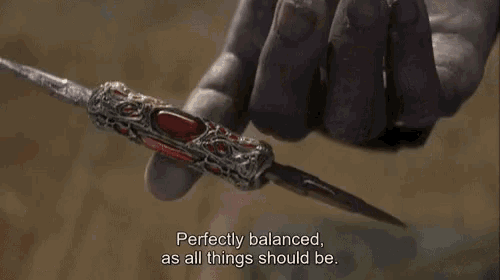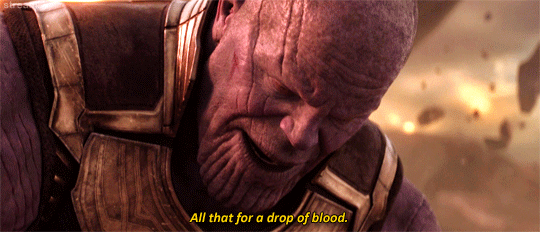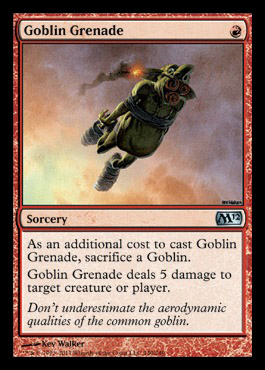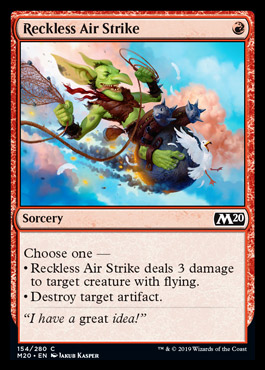Magic's Corset: The Core Set
For centuries, the undergarment of choice for women was the corset. Corsets were used to artificially give women an "hourglass" figure, as well as provide support for the breasts. Unfortunately, corsets had some issues. They were expensive, impractical, and downright uncomfortable. In fact, corsets were so restrictive that they would literally cause a woman's body to become deformed, pushing vital organs out of their normal position. Despite this, people still thought that corsets were the only real option in terms of undergarments for women. Even the poor would have at least some sort of makeshift corset if they could afford it.
By the 1800s, Corsets were starting to phase out a little bit. They restricted the range of body motion of women working in factories. This caused a decrease in productivity. Some members of the labor movement even called for people to stop wearing corsets. Indeed, some did turn on the corset, but the garment didn't completely die. The limitations of the corset did not hinder the trendsetting aristocratic and capitalistic elites of an imperial Europe and the Eastern United States. As such, the corset didn't die.
Then World War I happened.
During the war to end all wars, most countries had to strictly ration metal. Since most corsets contained at least some amount of metal, their production all but ceased to support the war effort. As such, women started wearing bras during the war. Even after the war was over, people stuck to bras. Some women tried to go back to the corset after the war, but they quickly abandoned the practice. The more simplistic and less restrictive comfort bras provided meant that one could still have the major functional benefit of the corset without the negative aspects. Although the change to the bra cost the aesthetic positives of the corset, the functional benefits heralded by the bra won the day in the end.
The Core Set: Magic's Corset
Magic has its own corset, conveniently and somewhat confusingly known as the Core Set. Core Sets were meant as a means to introduce new players to the game using a smattering of simple reprints. In 2009, core sets were allowed for the first time since Limited Edition Alpha to include new cards, and in 2010, Core Sets were allowed to use up to 1 non-evergreen mechanic in their designs. Like the corset, core sets were accepted by most as the defacto product for new players. Some of the sets, such as 10th edition and M11, were decent, providing interesting new cards and simple reprints to the game. Others, such as 8th Edition and M13 were far more trouble than they were worth. Overall, the Core Set was fine, but not great. They were not always very elegant, despite the stated goal of simplicity.
Then, in 2015, Wizards of the Coast announced that magic would be switching from a "One 3 set block and One Core Set" per year system to a "Two 2 set blocks" system going forwards. As such, the Core Set was abandoned. Recent Core Sets hadn't been selling as well as hoped. The money was in the block sets. After all, the Return to Ravnica, Theros, and Khans of Tarkir sets were all some of the highest-selling sets of their time.
In a way, the Two-Block system was to the Core Set what World War 1 was to the corset. Both were pretty disastrous events to the world as a whole, but they allowed for the re-evaluation of antiquated practices. Losing the Core Set didn't cause Magic to crumble.
Wizards eventually realized that blocks, in general, were not helpful for the game. Simply put, the heavy organization blocks required restricted WOTC's design choices and were a net negative for the game. Now that Wizards didn't need to use the summer release space for a block set, they decided to bring back the Core Set. This decision made sense on paper. The two-set blocks proved that magic needs some form of neutral standard set in which any card from any plane can be printed. Since the game had lost a fair number of standard players during the disastrous Battle for Zendikar and Kaladesh standard seasons, bringing in some sort of on-ramp to the game for new player also made sense. As such, the Core Set was brought out of its retirement.
Unfortunately, Wizards learned some of the wrong lessons from their Two-Block and old Core Set mistakes.
Wizard's first new core set, M19, was fine. It had a number of interesting and playable designs, as well as a pretty decent base of cards for players new and old alike to build with. Cards such as
Demanding Dragon and
Remorseful Cleric were simple and elegant, yet had some power behind them. The cycle of Elder Dragons were both interesting and Resonant with players.
However, M19 was not perfect. Its limited environment was objectively pretty bad, including a number of parasitic themes that simply didn't mesh with the rest of the format, such as G/W auras. In addition, M19 set the precedent that new core sets going forwards wouldn't be allowed to use non-evergreen mechanics. Luckily, neither of these factors sunk the set. Although M19 didn't sell quite as well as the sets that surrounded its release, it still managed to make a profit.
When M20 rolled around, things got worse. The positive simplicity of M19 was largely lost. Although simple designs do exist in M20, there is very little resonance. There are a ton of weird, wordy cards, such as
Embodyment of Agonies and
Agent of Treachery. In addition, the Protection Mechanic, formerly retired for being too complicated and hard to understand, was brought back to "help new players understand the concept of enemy colors."
As Peter LaCara states:
Man, there are some weird-ass cards in here for a core set.
To M20's credit, the set tried to fix the limited issues faced in M19 by trying to build limited archetypes that worked in 3-color pairs and 2-color pairs instead of simply focusing on 2-color pairs only. This system, however, appears to be more of a novelty for one set than a sustainable model going forward. It already seems like the designers were scraping the barrel looking for good limited archetypes. For example, Temur's limited theme for the set is Tribal Elementals. No, that's not a joke. Yes, this is only the second new core set.
M20 made it very clear that core sets, in their current form, won't be able to last much longer. The rigid, highly structured design requirements Wizards is putting on its design team is hurting the sets that are literally supposed to be the core of the game. To put it lightly, they don't entirely seem to understand how to manage complexity in a set for newbies. Basically, these new Core Sets have the same issue as the corset, they're restrictive, and they can quite possible deform the user, or in this case, game.
However, this doesn't mean Wizards needs to axe the Core Set again. If M19 taught us anything, it's that Core Sets can be good. In fact, I would argue that getting rid of the Core Set again is an actively bad idea. Having a regular set primarily for new players without polluting other products is genuinely important. Core Sets allow the opportunity to print bread and butter type cards like
Llanowar Elves and
Lightning Strike without needing to visit a setting where those cards make sense. They can jump-start collections by providing the building blocks of the game to new players.
Basically, M19 and M20 are corsets. Magic needs a Bra.
An Examination of Corset Core Sets.
To understand what a Magic Bra looks like, we must first examine a the Magic Corsets.
These are the five things Mark Rosewater states that M19 did well. Presumably, these things are going to be tenants of future Core Set designs, so it's important to examine what they are:
-Accessibility
-Introductory Product Integration
-No Non-Evergreen Keywords
-Small Flavor Theme
-Five Monocolored Planeswalkers
I think all but two of these points are incorrect to varying degrees.
Let's start with accessibility. Core 2019 was simple enough as to not be confusing. It had some weird rare artifacts that made little sense, and a few overly-wordy cards, but overall, the set did fine in this department.
I don't have enough experience with the Introductory Products to fully comment on their usability. From what I've seen the M19, the Introductory Products from M19 were quite good. However, it appears that M20's Introductory Products are very weird. One of the decks has a vampire theme for some reason, and many of the "made for noobs" cards seem a little more complex than they maybe should be.
No Non-Evergreen Keywords in core sets is not good. This is not to say that every core set should have Non-Evergreen Keywords. M19 didn't need any. However, let's say a future core set would benefit from having a Non-Evergreen Keyword for constructed or limited purposes. The set should be allowed to have what it needs in that case.
Small Flavor Themes are fun, but they're not always necessary. M19 did it's flavor theme very well. It felt like a Bolas origin set, containing Elder Dragons, a Dragon Subtheme, and Walkers specifically chosen because they had a direct connection with the face character. M20, however, showed that it is very possible to botch a flavor theme. The set feels almost nothing like a Chandra set, save for the fact that has 3 Chandra cards. Even Nissa, Chandra's apparent girlfriend, isn't in the set. It feels weird. M20 would have been better off trying to be generic.
Five Monocolored Planeswalkers are not necessary. There should be 5, color balanced planeswalkers in a set, but they don't need to always be mono-colored. Magic Origins was actually going to be a villian-themed core set using 5 allied-colored walkers as it's face. This was changed to the Origins of the Gatewatch later in design when the decision to switch to two-set blocks was made. The point here is not that 5 walkers is wrong, but rather that they should not always be mono-colored if the set would be better otherwise.
Now Watch, and Learn, Here's the Deal
Some are probably wondering what I think a Core Set should contain. After all, it is a pretty audacious claim to say that the literal head designer of Magic is wrong about Magic. Mark, like M19 is on the right path. He's just not correct in the nitty-gritty details.
Core Sets need to excel in 5 areas, in this order:
-Simplicity
-Applicability in Constructed
-Usage of Non-Evergreen Keywords
-Introductory Product Integration
-Limited Gameplay
Above all else, a core set needs to be simple. Simplicity is not the same thing as accessibility. An accessible set only does things to avoid driving away new players. Simple sets invite them. Let's take a look at two cards:
Goblin Grenade is a very simple card. You chuck a goblin at something, it explodes, and damages a thing. The flavor of the card is clear.
Reckless Air Strike, on the other hand, isn't that clear. It has two disjointed abilities that aren't flavourfully bound in any meaningful manner. An Air Strike that only hits things in the air seems a bit contradictory to the point of the term "Air Strike." Although this could be intended as a pun,
Reckless Air Strike also destroys artifacts, which just doesn't make a whole lot of sense. It's wordy and confusing.
Grenade is resonant. Air Strike is Dissonant.
Core sets need to apply in constructed. Under the new 3 and 1 system of Standard set organizations, Core Sets end up as the glue holding the standard environment together. Core Sets must contain cards that support and expand upon set-specific themes that may not have had the space to breathe in their respective set. Core Sets also need to provide the most support for the most recent Expansion sets. M20 included a bunch of random cards with the tribal subtypes from the Ixalan block. Although these cards could impact standard, they are coming far too late to really matter. Ixalan leaves standard just 3 months after M20 is released. I'm not saying that Core Sets shouldn't look to provide support to the exiting Standard sets, but they should focus on the most recent sets.
In this regard, Core Sets also should be the home of specific reprints. Although M20 did a lot wrong, it did manage to reprint both
Thrashing Brontodon and
Steel Overseer. Neither of these cards make sense in every Expansion. Brontodon would need to be on a world with Dinosaurs.
Steel Overseer would need to be in an expansion with an artifact theme to make sense. I would also argue that oddball reprints for eternal formats should be allowed in the Core Set.
Stifle, for example, probably won't warp standard, but would be useful to the eternal formats where it sees play.
Core Sets should be allowed to use Non-Evergreen keywords when they make sense. The key words here are: "when they make sense." M12 and M13 picked terrible non-evergreen returning mechanics. Bloodthirst and Exalted are simple, but they aren't elegant. These specific non-evergreen mechanics made little sense as inclusions. However, this does not mean that non-evergreen mechanics should never be in core sets. Certain mechanics like Flashback, Convoke, and Cycling have more relevant purposes in a set than even some evergreen mechanics. I would argue that the average cycling does better work than the average card with protection from a color. If it makes sense to put a few cycling cards into a Core Set to help support constructed, then, by all means, cycling should be allowed to be in the set.
Cards with non-evergreen mechanics are not inherently complex. Take a look at a card like
Firebolt. Even though it uses a non-evergreen mechanic, the point of this card is clear. It's a burn spell that you can play twice. Compare this to a card like
Inferno Hellion. Hellion isn't simple. New players don't always grasp why they would want to play a card with such a major perceived downside. I would argue that this card is more complex than the previously mentioned
Firebolt or something like
Rebuild.
Introductory Product Integration is important for the reasons Mark Rosewater states in his recent "
Core to the Point" article. I'm not going to re-tread that here, but just know he's correct.
Last, but not least, core sets need to have a good limited environment. Core Set Limited should be simple enough that new players can grasp the basic concepts of how to draft without voiding the decision-making skills one needs in an expansion-set limited environment. This can be done primarily by making the role of each card clear.
Murder kills a creature.
Colossal Dreadmaw has a big butt and can do a lot of damage. These cards are very simple, and as such serve a single generic role rather than a highly specialized specific for a specific deck. Cards that only go into one or two limited archetypes should be at uncommon and above. Any gold cards in a set should only be playable in a specific 2-color archetype, so that players have a clear understanding of what that color pair wants to be doing.
That said, the limited environment should not completely be "on rails." One of M19's big limited issues was that many of the archetypes didn't mesh very well. G/W Auras and W/B lifegain had very few pieces in common, save for premium removal. Core set limited cards, especially at common, need to be playable in every deck. Any green deck can play
Colossal Dreadmaw and every black deck wants a
Murder. These cards may get better in a specific deck, but they aren't unplayable anywhere.
If Wizards were to take these tenants presented here to heart, I think they would be far more successful in their Core Set designs. M19 was close to being amazing, and M20 could have been a lot better without needing to change too much.
Conclusion
Like the corset, Core Sets have become outdated. Even though their return could herald good things for Magic, Wizards of the Coast does not seem to understand how to correctly use what might be the best tool in their Standard arsenal. The support Core Sets provide to the game can be instrumental to facilitating a healthy flow of new players and a decent environment in Standard. However, some of the restrictions the design team has placed upon Core Set development could crush the Core Set's sustainability, just as a corset might crush a woman's internal organs. The entire reason for moving away from the old block model was to provide Magic design with more options. Taking away options from Core Set design seems to be antithetical to the reason for which they were brought back in the first place.
Magic does not need a Corset.
It needs a Bra.








